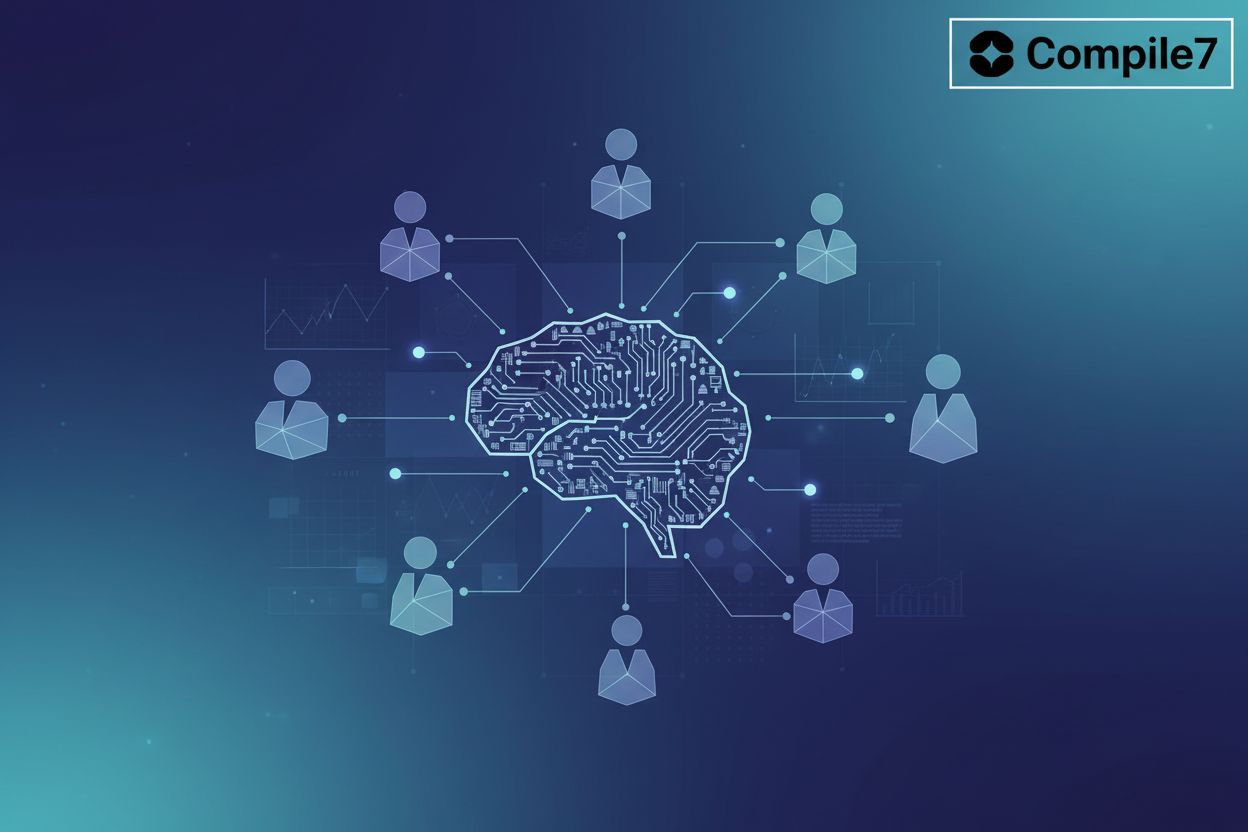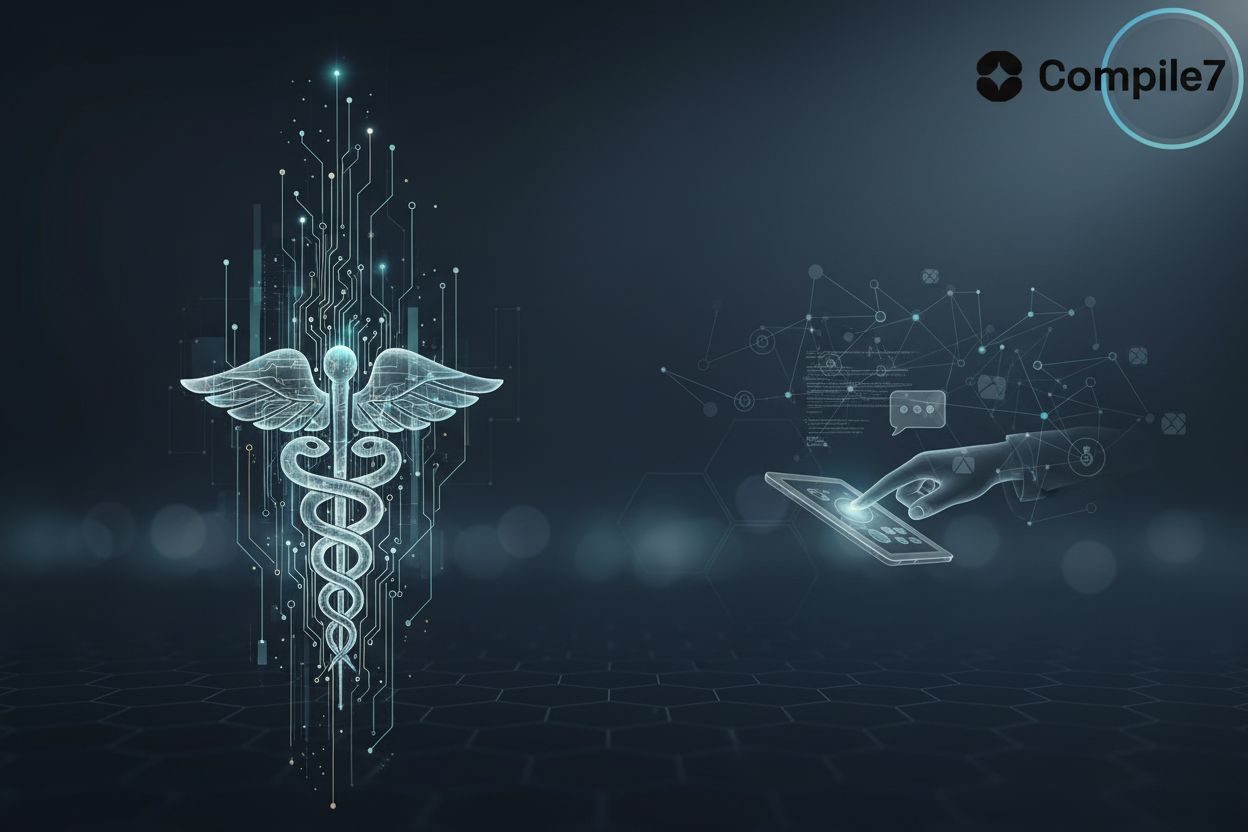Unlocking Efficiency: How AI-Driven Edge Computing is Revolutionizing Business Automation
TL;DR
Understanding the Convergence of AI and Edge Computing
AI and edge computing: a match made in heaven? Absolutely! Each amplifies the other, creating powerful solutions for business automation. Let's explore this convergence and how it's reshaping industries.
AI-driven edge computing puts ai algorithms directly on edge devices. (What Is Edge AI? | IBM) This shifts processing from the cloud to the device itself, closer to where data originates. (Edge Computing Explained with Examples - The APP Solutions) It's all about real-time insights by processing data at its source. (What Is Real-Time Data? - IBM)
- Healthcare: Wearable devices analyze patient data on the spot for immediate alerts.
- Retail: Stores use smart cameras for real-time inventory and customer behavior analysis.
- Finance: Fraud detection systems analyze transactions instantly at ATMs.
ai thrives on edge computing's low latency and efficient bandwidth because many ai models need to iterate rapidly or perform tasks that are super time-sensitive. For example, in autonomous driving, a fraction of a second delay in processing sensor data could be critical. Similarly, in industrial automation, immediate feedback is needed for precise robotic movements. Edge computing's ability to process data locally, without the round trip to the cloud, drastically cuts down this latency, enabling these quick, critical decisions. It also means less data needs to be sent over networks, which is a big deal when you've got tons of data from IoT devices.
Next up, we'll dive into why ai needs edge computing to truly shine.
Key Benefits of AI-Driven Edge Computing for Business Automation
AI-driven edge computing offers a powerful way to automate business processes. But what are the real-world advantages that businesses can expect? Let's dive into the key benefits.
Edge computing minimizes data transmission delays, enabling real-time responses. This is crucial for applications where every millisecond counts.
- Autonomous vehicles use low-latency ai to make split-second decisions, improving safety and efficiency.
- Industrial robots benefit from real-time processing for precise movements and immediate adjustments.
- Remote surgery relies on near-instantaneous feedback to ensure patient safety and successful outcomes.
Processing data locally reduces the risk of data breaches during transmission. Edge computing also helps comply with data privacy regulations.
- Healthcare providers can keep sensitive patient data on-premises, adhering to regulations like GDPR.
- Financial institutions can analyze transactions locally, reducing the risk of exposing customer data.
- Government agencies can maintain secure control over classified information by processing it at the edge.
Edge ai reduces the need for expensive cloud resources by processing data locally. This saves bandwidth and storage costs by filtering and summarizing data at the edge.
- Smart grids use dynamic resource allocation to optimize energy distribution, reducing waste and costs.
- Manufacturing plants can analyze sensor data locally to predict equipment failures and schedule maintenance, saving on downtime and repair expenses.
- Retail stores use smart cameras to analyze customer behavior and optimize product placement, increasing sales and efficiency.
By filtering and processing data locally, edge ai ensures only the most relevant insights are sent to central systems, making data management more efficient.
Now, let's explore some real-world applications across industries.
Real-World Applications Across Industries
AI-driven edge computing is no longer a futuristic concept; it's transforming industries right now. How are businesses leveraging this convergence to gain a competitive edge? Let's explore some compelling real-world applications.
Predictive maintenance uses ai to analyze sensor data from machines. This allows for early detection of wear and tear, preventing costly breakdowns. For instance, in manufacturing, sensors on a conveyor belt can detect unusual vibrations, signaling an impending motor failure. The edge device analyzes this data locally and triggers a maintenance alert before the belt stops working.
Quality control improves with ai-driven edge computing detecting defects in real-time on assembly lines. This ensures higher product quality and reduces waste.
Many organizations are using edge ai to monitor equipment and optimize performance.
Traffic management systems use edge ai to analyze video feeds from cameras in real-time. This optimizes traffic flow and reduces congestion.
Public safety is enhanced by detecting anomalies and suspicious activities. This ensures safer urban environments.
Edge computing helps manage urban resources more efficiently by analyzing data locally and making quick decisions.
Remote patient monitoring becomes more effective through edge ai. Wearable devices process data directly, providing immediate alerts and insights.
Faster diagnostics are possible by analyzing medical images at the point of care. This improves healthcare accessibility and outcomes.
AI-driven edge computing enhances healthcare by enabling timely interventions and personalized care.
As ai continues to evolve, businesses must embrace AI-driven strategies to remain competitive. Next, we'll dive into how AI-driven edge computing enhances security and data privacy.
Overcoming Challenges in Implementing AI-Driven Edge Computing
Implementing AI-driven edge computing presents unique hurdles. Successfully navigating these challenges is crucial for unlocking its full potential in business automation.
Edge devices often have limited computing power and memory. This can restrict the complexity of AI models that can be deployed.
- Model optimization techniques, such as quantization and pruning, help reduce model size and computational demands. Quantization essentially means using less precise numbers to represent model parameters, making them smaller and faster to process. Pruning involves removing less important connections or neurons from the ai model, effectively making it leaner.
- Specialized hardware accelerators, like GPUs or FPGAs, enhance AI processing at the edge.
Managing and updating AI models across numerous edge devices poses a significant challenge.
- Robust device management platforms are essential for remote monitoring and updates.
- Standardized deployment processes and security protocols ensure consistency and protection.
Addressing these implementation challenges paves the way for secure AI deployment. Let's examine how AI-driven edge computing enhances security and data privacy.
Future Trends and Innovations
The advertising landscape is rapidly changing, thanks to ai. But what exciting trends can businesses expect in the near future?
TinyML is gaining traction, bringing ai to ultra-low-power devices.
This expands edge ai possibilities in IoT applications.
Imagine energy-efficient ai optimizing smart home devices or wearable health monitors.
MEC uses 5G networks for ultra-low-latency connectivity, crucial for edge ai.
Expect real-time video analytics in smart cities and immersive AR/VR experiences.
Telecommunication providers will play a key role in deploying MEC infrastructure.
The future is bright for AI-driven edge computing. Next, we'll dive into the critical aspects of security and data privacy.
Leveraging AI Agents for Enhanced Edge Computing Solutions
Can AI agents supercharge edge computing? Absolutely! Tailored AI agents can automate tasks, boost productivity, and transform business operations. Let's explore the potential of AI agents.
Compile7 specializes in crafting custom AI agents for edge computing solutions. These agents automate tasks and enhance productivity. Developing and integrating these agents involves defining their specific functions, training them on relevant data, and deploying them onto edge devices. This process often requires careful consideration of the edge device's capabilities and the desired automation outcome.
- Customer Service Agents: Improve customer interactions at the edge.
- Data Analysis Agents: Analyze edge data for real-time insights.
- Process Automation Agents: Streamline edge-based workflows.
By developing custom AI agents, Compile7 transforms how businesses operate.
Next, we'll dive into the critical aspects of security and data privacy.
Conclusion: Embracing AI-Driven Edge Computing for a Smarter Future
AI-driven edge computing is not just a trend; it's a fundamental shift in how businesses operate. Are you ready to embrace this smarter future?
AI-driven edge computing revolutionizes business automation. By processing data closer to the source, it reduces latency and enhances real-time decision-making. This is crucial for industries like manufacturing, healthcare, and transportation.
AI agents further enhance edge computing solutions. They automate tasks, analyze data, and streamline workflows, boosting productivity and efficiency. Compile7 specializes in custom AI agents that can transform business operations.
Edge ai enhances security and data privacy by processing sensitive data locally. This reduces the risk of data breaches and ensures compliance with regulations like GDPR. For example, healthcare providers can keep patient data on-premises.
Businesses should explore and adopt edge ai solutions to stay competitive. This includes strategic planning, collaboration, and investment in edge infrastructure. To approach strategic planning, businesses should ask: What are our most pressing operational bottlenecks? Which of these can be addressed with real-time data processing? For collaboration, consider partnerships with edge hardware providers or ai development firms. When investing in edge infrastructure, prioritize scalability and security.
Unlocking the full benefits of edge computing requires strategic planning and collaboration. Organizations should assess their specific needs, identify suitable edge ai applications, and develop a roadmap for implementation.
Embrace AI-driven edge computing to unlock efficiency and transform your business.





